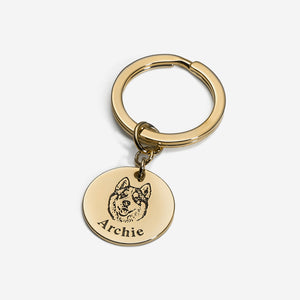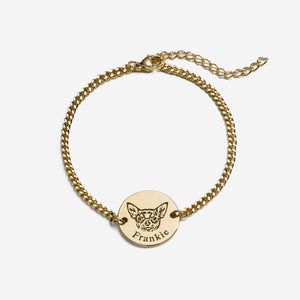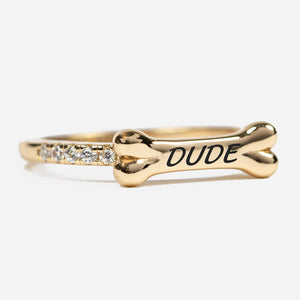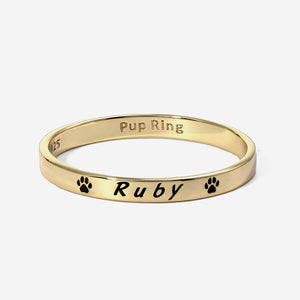If you’re a free spirit, but feel guilty about leaving your pup at home, it can be easy to feel torn between doing what you love and spending time with the pup you adore. Did you know though, that with the proper amount of planning, you can easily bring your best friend with you? If you’d like to take your next vacation with your dog by your side, then we’ve got you covered!
Documents
First things first, you’ll want to be sure you have documentation of your dog’s vaccinations, as well as things like other medical records, adoption papers, etc. It’s a good idea to keep physical copies as well as digital versions. Not only will you need them for your dog’s benefit in case of an emergency vet visit, but your hotel, campsite, or other accommodations may require them. It’s also good in case you’d like to board your dog in a daycare if you aren’t doing dog-friendly activities one day. Also, while your dog is not required by law to be vaccinated against kennel cough, most good daycares will require it in order to keep all the playmates under their care safe and healthy.
Depending where you travel, you may also come across checkpoints during your travel which can ask for your dog’s records. Some places may require just a rabies vaccination, while others may have much more strict health requirements or even a quarantine period. Some areas also have breed restrictions, so if your dog is a breed that has historically been restricted in other areas, spend a little extra time researching laws and regulations where you’ll be traveling.
Speaking of vets, you will want to have your normal vet’s contact information handy and scope out some emergency vets both along your route as well as at your destination. While you probably won’t need it, in a pinch you will be thankful that you have a plan.
Hotels or Campsites?
 Fortunately there are tons of places that are becoming pet friendly, and that includes hotels and campsites! Of course where you choose to go will depend on your own preference. Make sure that your dog fits under any size restrictions. If you’re looking to spend a lot of time in the great outdoors and want to give your pup as much fresh air as possible, a campsite may be the option for you! If roughing it isn’t quite your style but you still want to be outdoors, some campsites have furnished cabins that you can rent. This worked especially well for my husband and I a couple of years ago when we wanted to meet our in-laws halfway instead of embarking on a 14 hour drive to visit. We both brought our pups, they got to spend lots of playtime together, and we enjoyed Christmas in a nice cozy cabin.
Fortunately there are tons of places that are becoming pet friendly, and that includes hotels and campsites! Of course where you choose to go will depend on your own preference. Make sure that your dog fits under any size restrictions. If you’re looking to spend a lot of time in the great outdoors and want to give your pup as much fresh air as possible, a campsite may be the option for you! If roughing it isn’t quite your style but you still want to be outdoors, some campsites have furnished cabins that you can rent. This worked especially well for my husband and I a couple of years ago when we wanted to meet our in-laws halfway instead of embarking on a 14 hour drive to visit. We both brought our pups, they got to spend lots of playtime together, and we enjoyed Christmas in a nice cozy cabin.
Some places will require you to have your dog in its crate if left alone in the room/cabin/campsite. This is one of those times that having your dog crate trained can really come in handy. If not, then having a doggy daycare picked out nearby can also give you the chance to embark on a few pet-free activities.
Of course, if you opt to spend your trip in a hotel room, keep in mind that some hotels will have designated walking areas for you and your dog. Be sure to be courteous and pick up after your pooch too!
Car safety- crate vs seat
 How do you actually want to travel with your dog? Let’s talk about car safety. No matter how you choose to transport your dog, you should find a way to secure it into its seat. In the event of a car crash, having your dog secured can save its life. Having your dog secured can also help you reach it easier in the event that a crash has happened- your dog will be nervous, and by having your dog secure, you don’t have to worry about chasing an injured dog after a car crash. Preventing your dog from roaming around on hopping in your lap during a drive can also prevent accidents. No matter how much you love having your pup roll around in your lap, it can potentially cause a dangerous driving situation if your pup is startled, gets excited, or even just loses its balance at a sudden stop.
How do you actually want to travel with your dog? Let’s talk about car safety. No matter how you choose to transport your dog, you should find a way to secure it into its seat. In the event of a car crash, having your dog secured can save its life. Having your dog secured can also help you reach it easier in the event that a crash has happened- your dog will be nervous, and by having your dog secure, you don’t have to worry about chasing an injured dog after a car crash. Preventing your dog from roaming around on hopping in your lap during a drive can also prevent accidents. No matter how much you love having your pup roll around in your lap, it can potentially cause a dangerous driving situation if your pup is startled, gets excited, or even just loses its balance at a sudden stop.The two main ways you can secure your dog during a drive are in its crate or using a doggy seat belt or harness. Pretty obviously, if your dog is crate trained and the full crate fts in your car, you’re good to go! If not, or if you simply prefer to have your dog as a passenger, there are several kinds of harnesses or seat belts you can get to buckle up your pup.
Some other general car safety and comfort tips:
Don’t feed your dog treats or food in a moving car. Your pup could easily choke if they are eating while the car is in motion, and then you would have to find a safe place to stop before you can help your dog dislodge any airway obstructions.
Take frequent stretches and potty breaks. If you are on a really long drive, your dog needs breaks too! Give your dog the chance to stretch its legs, do its business, and this is also a good time for food, water, or treats if needed.
Finally, if your dog is anxious during drives, and behavioural training doesn’t seem to help, consider talking to your vet about medication. My dog Cookie can be a really anxious pup in a few specific situations, and that includes long car rides. When we travel we can be in the car for 14+ hours sometimes, and I have always felt terrible for Cookie who pants and shakes and is generally restless for a majority of the drive. That kind of stress is definitely not good for either of us. While I always believe in working with your dog through training, there are times that using medication can help you and your pup both be much more comfortable and happy. We tried a prescription anxiety medication for Cookie on our most recent drive and I couldn’t be happier with the decision. Cookie was calm and relaxed, and I didn’t have to spend the entire drive trying to calm him and feeling guilty for being unable to help. For the occasional long drive, it is a good solution for us.
Traveling via plane

If you plan to fly with your dog, you will want to double-and triple-check the airline’s policies. Many airlines will let your dog fly with you in the cabin, but there may be restrictions, such as size or breed. They may even have a restriction on how many dogs can be on the plane at once. Breed restrictions with airlines can be especially tricky and surprising to those who have not flown with their dog before- in particular, short-nosed breeds are often not allowed to fly because it can be more dangerous for them than for other dogs. Some dog breeds are unable to regulate their temperature well, or have more breathing problems than usual, so these restrictions are in place to protect your dog.
While it is a good idea to have a vet checkup before you travel to ensure your pup’s health, some airlines may require a signed certificate from your vet certifying your pup’s health. While I stated before that anxiety medication may help certain dogs on long drives, sedating your dog for air travel is not recommended. It can make it more difficult for your dog to regulate its body temperature, or react to its crate shifting around, or can even worsen breathing problems in dogs. Talking with your vet about your pet’s health during travel can help you make the best decisions for your dog.
If your dog will be traveling in the cargo part of the plane, the airline may have specific requirements for your dog’s carrier, or may even have a list of specific carriers they accept. It should be in good condition and approved by the airline. Your standard, cheap plastic crate will likely not do well here. Really this is another case of doing thorough research on the specific airline you choose to travel with.
Finally, having a well-rounded, well-behaved dog can make airline travel much less hectic and stressful for both you and your pup. If you haven’t checked out our article on Canine Good Citizenship yet, I’d highly recommend it! Training your dog for a Canine Good Citizenship certificate is a great way to ensure a well-behaved, confident dog, and help you feel confident in your dog’s ability to approach new situations with manners intact.
Dog-friendly activities
What will you do once you arrive? If you’re traveling, you probably already had an idea of what you wanted to do.. But how much of it is dog-friendly? Probably more than you thought!
The Great Outdoors
The most obvious activities you probably thought of are outdoor adventures. From short, easy walks to intense hikes, make sure that your dog is up to the challenge. It’s always a good idea to bring water, food, and a first aid kit for your pup if you’re planning a more involved hike, and be prepared to go home early if your pup gets tired. Keep in mind that your dog can’t tell you directly if they’re too hot or cold, so keep a close eye on them to make sure they aren’t overheating or freezing. You can also pick up a harness to carry your dog on your back in case they get too tired to continue. If you’re not prepared to carry your dog back from an adventure, keep your hike on the easy, gentle side of things. You should also check for rules about keeping your dog on a leash- some areas require your dog to be leashed, whether out of courtesy for other people, or if there is sensitive wildlife in the area. Even if you’re not required to leash your dog, bring a leash anyway in case something happens and you need it.
 You Don’t Know Till You Ask
You Don’t Know Till You Ask
More and more places are becoming pet friendly over time. Many places that have traditionally been considered pet-free are opening their doors to their four-legged friends. Many stores now welcome dogs to shop alongside owners, and other places such as museums, cafes, etc. may surprise you with their pet policy. You never know whether your pup will be allowed unless you ask, so if you have a location in mind, just call! It also helps to have an exceptionally behaved pup. Being friendly and showing off your dog’s good manners can open up evenmore doors for you.
Keep Culture In Mind
Depending where you travel, you may wind up somewhere that traditionally has a different idea of what a dog is. Especially if you travel outside the country, you may wind up in a number of different places that see dogs differently than you. In some areas, there are far more feral strays than pet dogs, and they will be surprised to see your prized pup being toted along in your purse. Some people may have an intense fear of even the tiniest puppy, or may not have experienced a well-behaved pooch. Being aware that other people may have different experiences with dogs will help you know what to expect when you go somewhere new, and by respecting other people’s experiences, you may find it easier to get along with the new faces you come across.
Where do you want to go with your dog?

Now that you know some of the most important tips and tricks when it comes to traveling with your dog, where would you like to go on your next adventure? Let us know! I hope you found something new and useful here, and I look forward to writing for you again next week!







